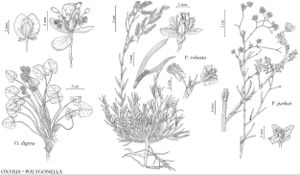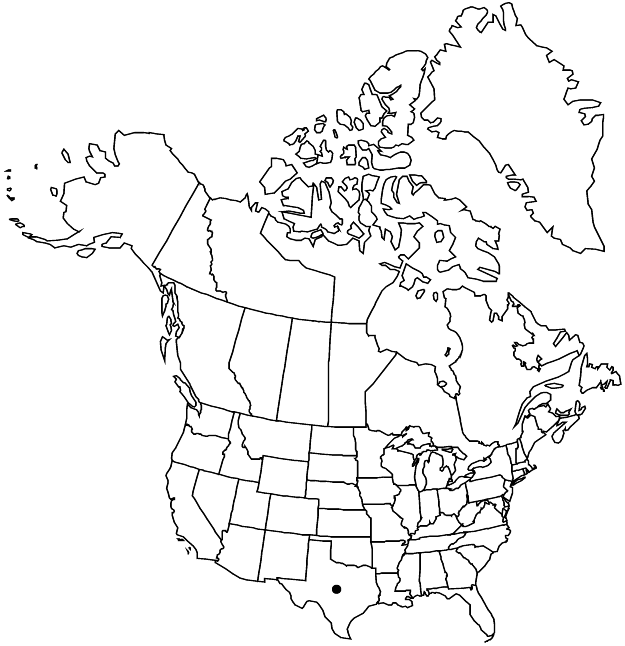Polygonella parksii
Rhodora 39: 417. 1937.
Herbs, annual, gynodioecious, 5.5–15 dm. Stems erect, usually branched proximally and distally, sometimes simple, glabrous. Leaves fugaceous; ocrea margins ciliate; blade linear, (0.9–)4–10.5(–15) × 0.3–0.8 mm, base barely tapered, margins hyaline, apex obtuse, glabrous. Inflorescences 2–6(–8) mm; ocreola not encircling rachis, sides and bases adnate to rachis, apex acuminate. Pedicels spreading in anthesis, spreading to reflexed in fruit, 0.4–1.3 mm, much longer than subtending ocreola. Flowers bisexual or pistillate; outer tepals loosely appressed to spreading in fruit, white, distal portion of midrib often greenish, obovate to elliptic, 0.5–0.9 mm in anthesis, margins obscurely erose; inner tepals loosely appressed in anthesis and fruit, white, obovate to elliptic, 0.6–1.4 mm in anthesis, margins entire to erose; filaments dimorphic; anthers yellow or pink; styles and stigmas 0.1–0.3 mm in anthesis. Achenes exserted, yellow-brown, 3-gonous, 1.7–2.1 × 1.3–1.6 mm, shiny, smooth. 2n = 36.
Phenology: Flowering Jul–Oct.
Habitat: Deep, loose sand in oak woodlands, sandy rangeland, disturbed sites
Elevation: 100-200 m
Discussion
Of conservation concern.
Polygonella parksii is known from eight counties in south and east-central Texas. It appears to belong to a clade including P. articulata, P. americana, and P. myriophylla (P. O. Lewis and D. J. Crawford 1995).
Selected References
None.

